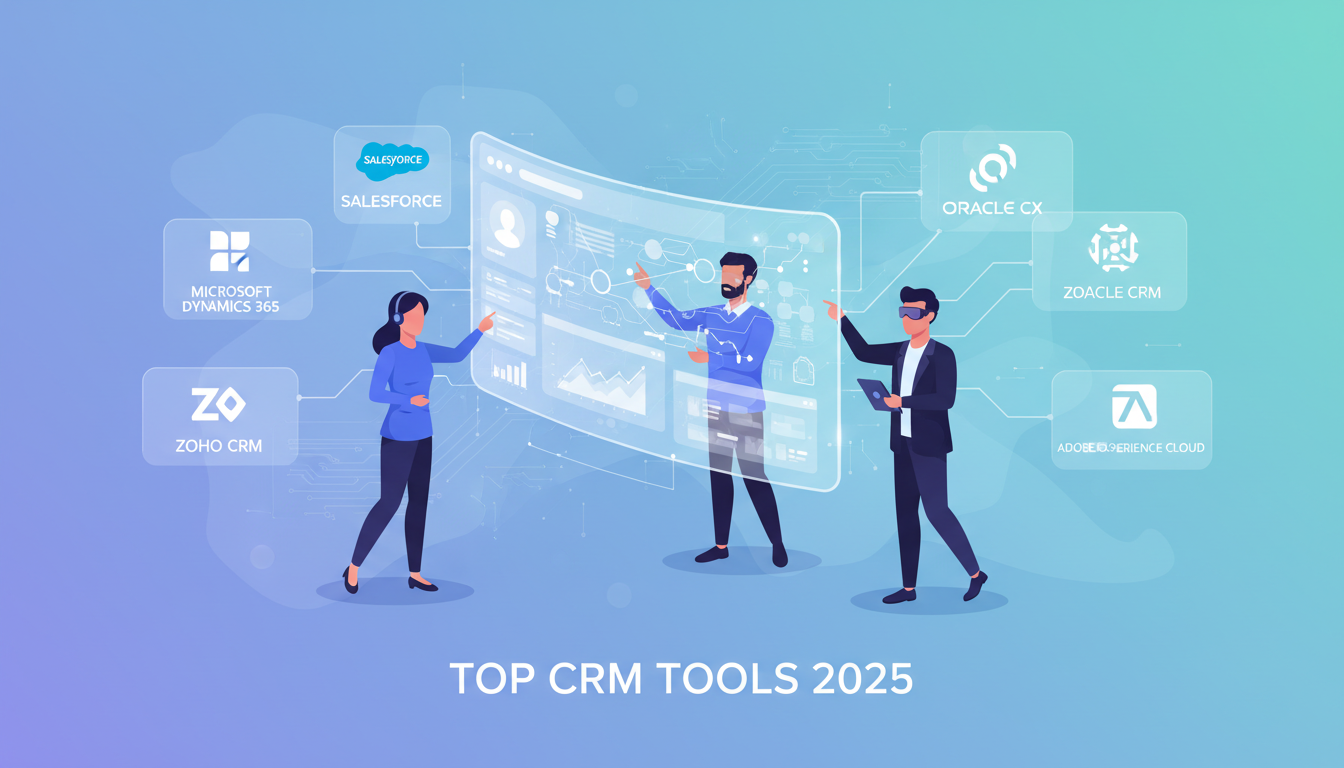Key Takeaways
-
Omnichannel marketing focuses on creating a seamless, integrated customer experience across all platforms, while multichannel marketing operates multiple channels independently to maximize product visibility.
-
Key benefits of omnichannel include higher customer retention rates and enhanced personalization, whereas multichannel strategies excel at reaching diverse customer segments and can also improve retention.
-
Choosing between omnichannel and multichannel strategies should align with a business’s objectives, resources, and customer preferences, with the possibility of integrating both approaches for a more comprehensive marketing tactic.
Do you need to find the best agency for digital marketing? Start discovering the top digital marketing agencies with Edvido.
Omnichannel vs Multichannel: Best Strategies for Success

In modern marketing, the debate between omnichannel and multichannel strategies is pivotal. Omnichannel marketing integrates multiple channels to create a unified, customer-centric experience, ensuring seamless interaction across all platforms. The goal is not just to be present on multiple channels but to maintain a consistent brand connection, regardless of the touchpoint chosen.
On the other hand, multichannel marketing focuses on engaging customers through multiple distinct channels, each operating independently. This strategy maximizes product visibility across different platforms without necessarily integrating these channels. For instance, while a brand using a multichannel approach might have a strong presence on social media, email, and physical stores, these channels may not communicate or sync with each other.
Digital technology has simplified the implementation of both strategies, but the choice often depends on specific business models, resources, customer preferences, and goals.
Deciding whether to adopt an omnichannel or multichannel strategy depends on your brand’s priorities. If your focus is on a cohesive customer experience across all touchpoints, omnichannel marketing is ideal. However, if you aim to increase product visibility and maximize reach across various platforms, a multichannel strategy might be more suitable. Understanding these distinctions helps tailor your marketing efforts for success.
Introduction
Omnichannel and multichannel strategies are essential in today’s marketing landscape. They cater to the diverse ways customers interact with brands, whether online, in physical stores, or through social media. Omnichannel marketing creates a seamless customer experience across multiple channels, integrating both online and offline interactions for consistency and engagement.
Adopting either an omnichannel or multichannel approach can significantly enhance customer relationships and drive better business outcomes. Understanding these strategies is crucial for any brand navigating the competitive marketplace and catering to evolving customer preferences effectively.
Discover the best social media marketing agency? See the details of the top social media marketing agencies and find the best one for your brand.
Understanding Omnichannel Marketing: What Is Omnichannel Marketing

Omnichannel marketing creates a unified, customer-centric experience across multiple channels. It integrates various platforms—online, mobile, or physical stores—to ensure consistent messaging and a seamless experience, no matter where customers engage with the brand. The goal is to provide a cohesive, personalized, and reliable brand presence.
Unlike multichannel marketing, which often operates in silos, omnichannel marketing integrates channels to enhance the customer journey. Whether a customer shops online or visits a physical store, their experience should be interconnected and fluid, reflecting the brand’s commitment to understanding and meeting their needs.
Benefits of Omnichannel Marketing
A standout benefit of omnichannel marketing is the significant boost in customer retention rates. A cohesive strategy can lead to a 30% increase in retention by ensuring every step of the customer journey is positive and engaging. This consistency builds brand loyalty, making customers feel valued and understood.
Enhanced customer interactions through personalized experiences is another advantage. Integrating various channels allows brands to monitor customer preferences and behaviors, tailoring marketing efforts more effectively. This personalization improves customer satisfaction and drives better business results by fostering stronger connections.
Omnichannel marketing also unites different communication channels through a single API, ensuring a seamless and consistent experience. This integration maintains brand uniformity and provides a holistic customer experience that can boost sales and improve marketing ROI.
How Omnichannel Marketing Works
Omnichannel marketing removes boundaries between channels, creating a unified view of the customer and commerce. This strategy integrates sales and marketing channels to deliver a seamless customer experience. Synchronizing customer and product data across all touchpoints ensures continuity and consistency.
A successful omnichannel strategy involves using various channels—websites, emails, social media, mobile, and physical locations—together to provide a cohesive experience. This integration allows for better tracking and attribution of customer interactions, helping brands understand the customer journey comprehensively.
Implementing an omnichannel contact center can significantly enhance customer service. By integrating multiple communication channels into a single platform, brands deliver a consistent and positive experience across all touchpoints. This setup improves customer satisfaction and facilitates better data collection and analysis, crucial for refining marketing strategies.
Do you want to learn about free AI tools that you can use for your brand's marketing operations? Discover AI in Digital Marketing, The Best AI Image Generators, The Best AI Logo Generators & Best AI Tools for Digital Agencies.
Key Elements of an Omnichannel Strategy

A successful omnichannel strategy is built on several key elements. The first is targeted messaging, which ensures that customers are attentive, receptive, and willing to act, regardless of the channel they are using.
Another crucial component is highly choreographed campaigns. Marketers must develop and coordinate touchpoints and micro-campaigns across multiple channels in a fluid, meaningful, and trustworthy manner. This coordination is vital for creating a seamless, personalized, and consistent customer experience across all platforms.
Marketing response attribution also plays a significant role. Understanding which channels, campaigns, or sequences of touchpoints contributed to conversions and sales is essential for optimizing marketing efforts. Accurate attribution allows brands to fine-tune their strategies, maximizing ROI and enhancing customer engagement.
Exploring Multichannel Marketing: What Is Multichannel Marketing
Multichannel marketing uses various independent channels to reach customers, offering flexibility and broader reach. This approach utilizes multiple platforms—stores, websites, social media, and mobile apps—for customer interactions, with minimal integration between these channels. The goal is to maximize sales on each platform and expand product listings to attract more customers.
Unlike omnichannel marketing, multichannel marketing segments channels into independent experiences, focusing more on product visibility than on creating a seamless customer experience. This strategy can be effective for businesses looking to increase their online presence and reach a wider audience without integrating multiple channels.
Benefits of Multichannel Marketing
One main benefit of multichannel marketing is its ability to reach diverse customer segments effectively. By leveraging various platforms, businesses can engage with a broader audience, enhancing their visibility and market presence. This approach provides the flexibility needed to tailor marketing efforts to different customer preferences and behaviors.
Another significant advantage is the potential for higher customer retention rates. Multichannel marketing has been shown to achieve a 90% higher retention rate compared to single-channel strategies. Successful campaigns, such as those by HSBC and Red Dress Boutique, demonstrate how a well-executed multichannel strategy can lead to substantial revenue growth and increased customer loyalty.
Check out our other marketing related contents; Best Digital Marketing Tools, What Does a Digital Marketing Agency Do, Marketing Strategy of Tesla, What is Content Marketing & What is a Marketing Plan.
How Multichannel Marketing Works
Multichannel marketing utilizes various channels—ecommerce sites, social media, and company websites—to enhance reach and visibility. Each channel operates independently, allowing businesses to tailor their marketing efforts to the unique characteristics and audiences of each platform. This independence can be both a strength and a challenge, requiring effective coordination to avoid fragmented customer experiences.
A key challenge in multichannel marketing is the need for effective automation to manage operations. Without automation, businesses can become overwhelmed as they grow, leading to inefficiencies and potential customer dissatisfaction. Additionally, multichannel contact centers handle communications independently across different channels, which can result in customers needing to repeat information. This lack of integration can hinder the overall customer experience and brand consistency.
To mitigate these challenges, businesses must invest in robust automation tools and strategies to streamline operations and ensure a consistent customer experience across all channels. This allows them to leverage the strengths of a multichannel approach while minimizing its drawbacks.
Single-Channel
Single-channel marketing involves reaching customers through one particular channel. This approach is simpler and easier to manage but limits reach and engagement opportunities compared to multichannel and omnichannel strategies.
While effective for small businesses or niche markets, it lacks the flexibility and broader reach offered by multiple channels.
Key Differences Between Omnichannel and Multichannel

The primary difference between omnichannel and multichannel marketing lies in how the channels operate and interact. Omnichannel marketing creates a unified experience across multiple channels, ensuring consistent messaging and seamless interactions regardless of the platform. This integration enhances customer satisfaction and loyalty by providing a cohesive and personalized experience.
In contrast, multichannel marketing uses separate channels operate independently, without integration. This approach maximizes product visibility across various platforms but can lead to siloed experiences that may not be as cohesive or engaging. Understanding these key differences helps businesses tailor their marketing efforts effectively and choose the right strategy for their needs.
| Feature/Aspect | Omnichannel | Multichannel |
|---|---|---|
| Definition | A seamless and integrated customer experience across all channels. | Multiple channels available for customer interactions, but not necessarily integrated. |
| Customer Experience | Unified and consistent experience regardless of channel. | Varies by channel; each operates independently. |
| Data Integration | Centralized data management; unified customer profiles. | Separate data silos for each channel. |
| Customer Journey | Smooth transition between channels; interconnected journey. | Fragmented journey; channels often operate in isolation. |
| Communication | Consistent messaging across all touchpoints. | Different messaging and tone per channel. |
| Technology | Requires integrated systems and platforms. | Can operate with disparate systems and platforms. |
| Channel Coordination | High level of coordination between channels. | Minimal coordination; channels function independently. |
| Customer Focus | Customer-centric approach; focuses on overall experience. | Channel-centric approach; focuses on individual channel performance. |
| Example | A customer starts shopping on a mobile app, continues on a desktop, and completes the purchase in-store seamlessly. | A customer receives a promotional email, visits the store, and finds a different offer. |
| Personalization | High degree of personalization based on unified data. | Limited personalization; varies by channel. |
| Efficiency | Increases operational efficiency by leveraging integrated systems. | Potential inefficiencies due to lack of integration. |
| Strategy | Holistic approach to customer engagement. | Tactical approach to channel-specific engagement. |
Customer Experience Focus
The focus on customer experience differs significantly between omnichannel and multichannel strategies. An omnichannel approach integrates and coordinates channels to create a seamless customer journey, prioritizing convenience and connection to the brand. This holistic approach enhances customer interactions and loyalty by ensuring consistent and personalized experiences across all touchpoints.
In contrast, multichannel strategies primarily aim to enhance product visibility across various platforms without necessarily coordinating these channels. While this approach can effectively increase reach and engagement, it may fall short in delivering a cohesive and memorable customer experience.
Discover AI in Digital Marketing, see the details of the content.
Data Integration and Management
Data integration and management are critical components differentiating omnichannel from multichannel marketing. Omnichannel marketing emphasizes collecting and integrating customer data from various sources to create detailed profiles for personalized marketing. This approach leverages integrated data systems to ensure a cohesive customer experience, contrasting with the decentralized data management characteristic of multichannel marketing.
Successful omnichannel marketing requires more than just a CRM; it demands integrated systems that synchronize data across multiple touchpoints. Utilizing data-driven insights allows businesses to personalize marketing efforts across all channels, ensuring a seamless and engaging customer journey.
Examples of Successful Omnichannel and Multichannel Strategies
Real-world examples illustrate the effectiveness of both omnichannel and multichannel strategies. Amazon exemplifies an effective omnichannel strategy by providing a consistent shopping experience across online and physical platforms. Numerous brands use omnichannel marketing strategies to integrate various touchpoints seamlessly, enhancing customer engagement and driving significant business growth.
Similarly, successful multichannel strategies can lead to substantial business outcomes. By leveraging innovative marketing campaigns across various platforms, brands can reach diverse customer segments and achieve impressive revenue growth.
Omnichannel Case Study: Allbirds
Allbirds, a sustainable footwear brand, has successfully implemented an omnichannel strategy that enhances the customer shopping experience. One of the key features of their approach is the ability for customers to purchase products in-store and have them shipped to their homes, providing convenience and flexibility. This seamless integration between online and offline channels ensures that customers receive a consistent and positive experience, regardless of where they choose to shop.
To support their omnichannel strategy, Allbirds uses Shopify POS technology, with up to 18 POS systems in each store. This technology enables the brand to maintain a unified inventory and customer data system, ensuring that all customer interactions are tracked and managed effectively. By leveraging these tools, Allbirds can offer personalized and efficient service, boosting customer satisfaction and loyalty.
Multichannel Case Study: Gymshark
Gymshark, a fitness apparel brand, has seen significant revenue growth through its strategic multichannel marketing initiatives. In the financial year 2018, Gymshark reported a revenue of $128 million, showcasing the effectiveness of their approach. By utilizing multiple channels, including innovative social media campaigns, Gymshark has managed to reach a wide audience and engage customers on various platforms.
The success of Gymshark’s multichannel strategy highlights the potential for brands to expand their reach and drive substantial business growth by leveraging different marketing channels independently. Their focus on creative and engaging content across social media platforms has played a crucial role in attracting and retaining customers, demonstrating the power of effective multichannel marketing.
See the details of Red Bull's Marketing Strategy to learn more.
Integration of Omnichannel and Multichannel
Integrating omnichannel and multichannel marketing strategies can create a more comprehensive approach to customer engagement. By combining the strengths of both approaches, businesses can enhance their marketing efforts and provide a more fluid customer experience. Start with a multichannel approach to maximize reach and gradually evolve into an omnichannel strategy to ensure seamless interactions across all touchpoints.
Using analytics to monitor customer interactions across channels is essential for optimizing the overall experience. This integration allows businesses to tailor their marketing efforts based on customer behavior and preferences, creating a more personalized and engaging journey.
By doing so, brands can achieve better customer engagement and drive significant business growth.
Challanges of Multichannel Marketing & Omnichannel Marketing
Implementing multichannel and omnichannel marketing strategies comes with its own set of challenges. For omnichannel marketing, personalization can be hindered by fragmented data across multiple interaction channels, making it difficult to provide relevant content to customers. Additionally, accurately attributing sales conversions in an omnichannel framework can be challenging due to the numerous touchpoints involved.
Multichannel marketing also faces challenges, such as maintaining brand uniformity across different channels and managing pricing inconsistencies, which can lead to customer dissatisfaction. Visibility into inventory and ensuring a consistent checkout experience are crucial for both multichannel retail strategy and multichannel marketing.
Addressing these challenges requires clear brand guidelines, transparent pricing strategies, and robust data management systems.
Choosing the Right Strategy for Your Business
Choosing between omnichannel and multichannel strategies should align with your company’s overall business objectives. Businesses lacking the resources for omnichannel marketing might opt for a multichannel marketing strategy instead. Key considerations include product acceptance, profitability, market presence, and readiness for increased operations.
Investing in appropriate technology is essential for the successful execution of either strategy. By evaluating your business needs and resources, you can determine the best approach to enhance customer engagement and drive business growth.
Factors to Consider
When deciding between omnichannel and multichannel marketing, flexibility in budget and resources is crucial. Some companies may opt for a multichannel approach initially. This is often due to the higher costs associated with providing a personalized experience in an omnichannel solution. Businesses should also consider their IT infrastructure and how customers will communicate with the brand today and in the future.
Balancing the strengths of multichannel approaches with the seamless integration of omnichannel tactics can maximize ROI. By adapting strategies to meet customer communication needs and facilitate growth, businesses can effectively navigate the competitive market.
Implementation Tips
Successfully implementing your chosen strategy requires commitment and consistency. For a holistic omnichannel strategy, significant investment and continued maintenance are essential. Businesses must dedicate time, budget, and ongoing monitoring of customer preferences to develop an effective approach.
If integrated marketing is new for your business, starting with multichannel strategies might be more manageable. Focusing on building long-term customer relationships through personalized omnichannel interactions and multichannel outreach can create a strong foundation for future growth.
Developing a Holistic Marketing Strategy
Combining elements of both omnichannel and multichannel approaches can lead to a seamless customer experience, improved ROI, enhanced product discovery, and supercharged sales. A unified marketing strategy significantly boosts the overall customer experience by integrating various touchpoints and ensuring consistent messaging across all platforms.
By leveraging the strengths of both strategies, businesses can create a comprehensive marketing approach that maximizes customer engagement and drives significant business growth. This holistic strategy allows for better adaptability and responsiveness to changing customer preferences and market trends.
Frequently Asked Questions

What is the main difference between omnichannel and multichannel?
The main difference is that omnichannel delivers a seamless and integrated customer experience across all platforms, whereas multichannel utilizes multiple channels independently without the same level of integration.
How can I implement an omnichannel strategy in my business?
To effectively implement an omnichannel strategy, begin by integrating your customer data across all platforms and ensuring consistent messaging and branding. This approach fosters a seamless experience for your customers across various touchpoints.
Is omnichannel better than multichannel?
Omnichannel is generally better for creating a seamless customer experience, while multichannel can enhance reach across different platforms. Ultimately, the choice depends on your specific business goals.
Can small businesses benefit from omnichannel strategies?
Absolutely, small businesses can significantly benefit from omnichannel strategies by fostering customer loyalty and engagement through a consistent and seamless experience across all touchpoints. This approach helps enhance overall customer satisfaction and drives repeat business.
What are some common challenges in omnichannel implementation?
Omnichannel implementation often faces challenges such as technology integration, maintaining consistent branding across channels, and effectively managing customer data. Addressing these issues is crucial for a seamless customer experience.
Transform your digital strategy. Connect with expert marketers on Edvido.
















